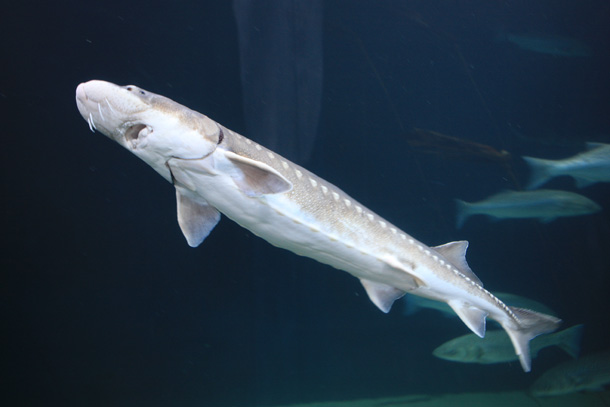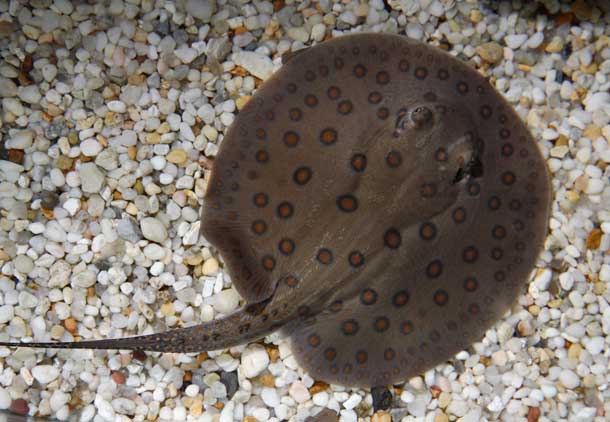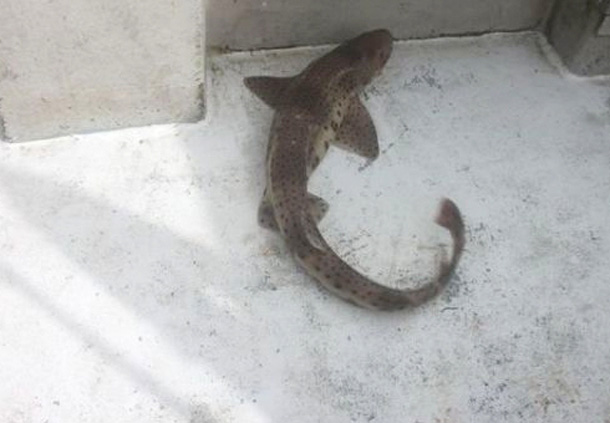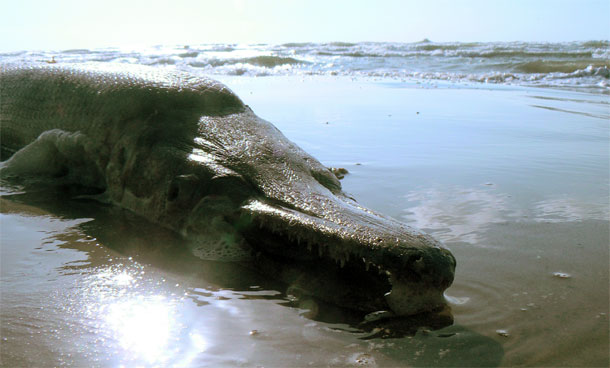5 Biggest Freshwater Fish
Obviously, considerations like location, environment, climate, food supply and presence of fishermen all play a part in how big something can grow. There are plenty of examples out there that may not be as colorful as some saltwater breeds, but are just as hefty and interesting to learn about. Check out these ten biggest freshwater fish in the world.

Beluga Sturgeon (www78 / Flickr)The Beluga Sturgeon, a needle nosed bottom feeder, is known for many things, not least the production of their roe, which goes on to become caviar. They are also the biggest freshwater fish in the world, achieving lengths of up to 18 feet. Their body is elongated, with a barrel-like midsection, and they also have barbs on their face which allow them to consume molluscs. They thrive in regular temperatures and in below arctic conditions, such as Eastern Europe. As they are slow moving bottom-feeders, as well as prized for their roe, they are vulnerable. Predictably, other elements such as pollution have an effect. Out of the 26 species of Sturgeon, most are currently considered in danger, and at threat of extinction.

White Sturgeon (Wikipedia)Similar to the Beluga, the White Sturgeon is a big-hitter in another part of the world, the US. It really is big, too: one grew to 20 foot and 1799lb - definitely one of the world's largest freshwater fish, and considered the largest freshwater fish in North America. These are not unusual sizes for this behemoth, which can live up to one hundred years. But such a large haul brought with it fishing in earnest, and a restriction of a six foot maximum catch was instituted in the 1800s. Again, they are subject to dam construction and the threat to spawning that entails.

Freshwater Stingray (Smithsonian's National Zoo / Flickr)
Found mostly in the rivers of South East Asia, these flat creatures can grow immensely large. They grow to over 1000lb and 15 feet across. One of the more disquieting features it possesses is the 15 inch long tail. Apparently, it has the capability to pierce bone. Like many other species on this list, these fish are declining in number due to overfishing and the construction of dams.

Catfish (Wikipedia)Catfish are hard to pithily sum up, because the name covers so many breeds, sizes, and colors the world over. One thing they do not have in common is the barbs at their mouth that resemble the whiskers of a cat. As you would expect from such a diverse group, sizes vary widely. The longest and heaviest breed is the Mekong Giant Catfish. It can reach sizes of 660lb and a length of 10.5 feet. The Mekong Giant Catfish enjoys a curious relationship with humankind and its habitat. In Thai folk lore, it is regarded with reverence, but in its own home the ongoing industrial work on the Mekong is forcing it out of its traditional habitat.

Alligator Gar (qnr / Flickr)This is a fish to make you look twice. It has a long snout and dorsal covering to look remarkably like a gator. It grows up to 10 foot and 200lbs at maturity. Not hard to see mistaken identities could occur; there's an excellent chance this is the sort of places urban legends about 'a huge fish in the lake' come from. It's even more resilient than other fish when comes to being out of water, living up to two hours. The Alligator is carnivorous and a wily hunter, but there is no confirmation of human attacks.
SOURCE : https://curiosityaroused.com/nature/10-biggest-freshwater-fish-in-the-world/
1. Beluga Sturgeon

Beluga Sturgeon (www78 / Flickr)The Beluga Sturgeon, a needle nosed bottom feeder, is known for many things, not least the production of their roe, which goes on to become caviar. They are also the biggest freshwater fish in the world, achieving lengths of up to 18 feet. Their body is elongated, with a barrel-like midsection, and they also have barbs on their face which allow them to consume molluscs. They thrive in regular temperatures and in below arctic conditions, such as Eastern Europe. As they are slow moving bottom-feeders, as well as prized for their roe, they are vulnerable. Predictably, other elements such as pollution have an effect. Out of the 26 species of Sturgeon, most are currently considered in danger, and at threat of extinction.
2. White Sturgeon

White Sturgeon (Wikipedia)Similar to the Beluga, the White Sturgeon is a big-hitter in another part of the world, the US. It really is big, too: one grew to 20 foot and 1799lb - definitely one of the world's largest freshwater fish, and considered the largest freshwater fish in North America. These are not unusual sizes for this behemoth, which can live up to one hundred years. But such a large haul brought with it fishing in earnest, and a restriction of a six foot maximum catch was instituted in the 1800s. Again, they are subject to dam construction and the threat to spawning that entails.
3. Freshwater Stingray

Freshwater Stingray (Smithsonian's National Zoo / Flickr)
Found mostly in the rivers of South East Asia, these flat creatures can grow immensely large. They grow to over 1000lb and 15 feet across. One of the more disquieting features it possesses is the 15 inch long tail. Apparently, it has the capability to pierce bone. Like many other species on this list, these fish are declining in number due to overfishing and the construction of dams.
4. Catfish

Catfish (Wikipedia)Catfish are hard to pithily sum up, because the name covers so many breeds, sizes, and colors the world over. One thing they do not have in common is the barbs at their mouth that resemble the whiskers of a cat. As you would expect from such a diverse group, sizes vary widely. The longest and heaviest breed is the Mekong Giant Catfish. It can reach sizes of 660lb and a length of 10.5 feet. The Mekong Giant Catfish enjoys a curious relationship with humankind and its habitat. In Thai folk lore, it is regarded with reverence, but in its own home the ongoing industrial work on the Mekong is forcing it out of its traditional habitat.
5. Alligator Gar

Alligator Gar (qnr / Flickr)This is a fish to make you look twice. It has a long snout and dorsal covering to look remarkably like a gator. It grows up to 10 foot and 200lbs at maturity. Not hard to see mistaken identities could occur; there's an excellent chance this is the sort of places urban legends about 'a huge fish in the lake' come from. It's even more resilient than other fish when comes to being out of water, living up to two hours. The Alligator is carnivorous and a wily hunter, but there is no confirmation of human attacks.
SOURCE : https://curiosityaroused.com/nature/10-biggest-freshwater-fish-in-the-world/
0 Response to "5 Biggest Freshwater Fish"
Posting Komentar